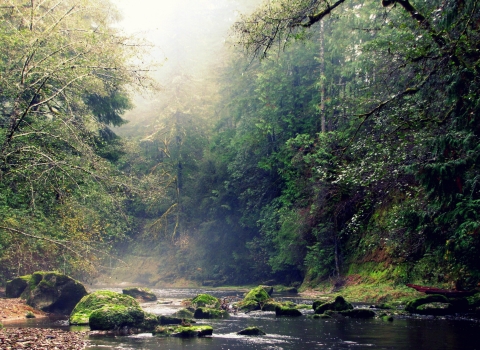DENVER – Since 1908, when the National Bison Range in western Montana was established by President Theodore Roosevelt, this 18,800-acre national wildlife refuge national wildlife refuge
A national wildlife refuge is typically a contiguous area of land and water managed by the U.S. Fish and Wildlife Service for the conservation and, where appropriate, restoration of fish, wildlife and plant resources and their habitats for the benefit of present and future generations of Americans.
Learn more about national wildlife refuge has continued to play an important role in the conservation and recovery of American bison. Several hundred bison now thrive on these accessible public lands, which also support Rocky Mountain elk, mule deer, white-tailed deer, pronghorn, bighorn sheep and more than 200 bird species.
As part of its ongoing efforts to plan for the future of the National Bison Range and continue the refuge's sound management, the U.S. Fish and Wildlife Service today announced the availability of the national wildlife refuge's final Comprehensive Conservation Plan (CCP) and associated final Environmental Impact Statement (EIS) for review. The final CCP will determine resource management and visitor recreational goals, including public use and access, for the National Bison Range during the next 15 years.
A planning team of federal, tribal, state and local government agencies jointly developed the CCP/EIS. These cooperating agencies include: the Confederated Salish and Kootenai Tribes; Bureau of Indian Affairs; Montana Fish, Wildlife and Parks; Lake County; and Sanders County.
The final CCP emphasizes maintaining and/or enhancing ecological communities, recognizing ever-changing environmental conditions. Under the final CCP, the Service would, in cooperation with our partners, identify and define future conditions that would drive management actions to:
- Build ecological community resiliency.
- Promote species diversity and genetic diversity.
- Build sustainability in management capacity and operations.
This holistic, ecological approach incorporates feedback received during a 45-day public comment period and three public meetings held in spring 2019. The final CCP also seeks to:
- Facilitate collaborative, cooperative and coordinated management of the National Bison Range with our federal, tribal, state, local, public and private partners.
- Provide better opportunities for wildlife migration and movement.
- Incorporate the expertise, resources and efforts of our partners to help facilitate the benefits of a broader functioning landscape.
Additional elements that will remain a continued focus of future refuge management in the final CCP include: management of surplus bison; prescribed fire management; collaboration with partner agencies, protection of natural and cultural resources, collaboration with the Confederated Salish and Kootenai Tribes in utilizing traditional ecological knowledge, and developing educational and interpretative materials including exhibits and programs.
The final CCP/EIS is available for review on the National Bison Range Complex CCP Planning website. A notice will publish in the Federal Register on September 6, 2019, opening a 30-day review period. Requests for information, questions, and comments on the final CCP/EIS may be submitted from September 6, 2019, through October 7, 2019, via email to scoping_NBR@fws.gov or by postal mail to: Bernardo Garza, U.S. Fish and Wildlife Service, Branch of Planning and Policy, 134 Union Boulevard, Suite 300, Lakewood, Colorado 80228. Following the 30-day review period, the Service will review any comments received, publish the final Record of Decision (ROD), and begin implementing the final CCP.
The National Bison Range lies entirely within the boundary of the Flathead Indian Reservation of the Confederated Salish and Kootenai Tribes.
The mission of the U.S. Fish and Wildlife Service is working with others to conserve, protect, and enhance fish, wildlife, plants, and their habitats for the continuing benefit of the American people. We are both a leader and trusted partner in fish and wildlife conservation, known for our scientific excellence, stewardship of lands and natural resources, dedicated professionals, and commitment to public service.
For more information on our work and the people who make it happen in the West, connect with us on Instagram and Facebook, follow us on Twitter, watch our YouTube channel, and download public domain photos from Flickr.


